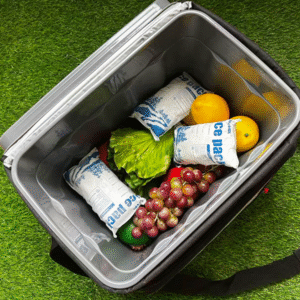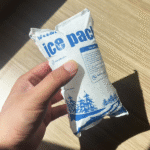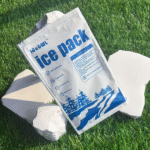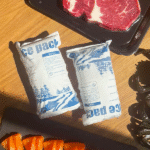Vacuum Sealed Dry Ice Packs: The Ultimate Solution for Cold Chain Logistics
In the fast-paced world of cold chain logistics, maintaining precise temperatures is essential for safeguarding the integrity of temperature-sensitive products. Vacuum-sealed dry ice packs are at the forefront of this revolution, providing an efficient and reliable solution for the safe transportation of pharmaceuticals, biologics, and perishable goods. These packs not only ensure optimal temperature control but also contribute to sustainability efforts, making them an invaluable asset in modern supply chains.

-
What are vacuum-sealed dry ice packs, and how do they work?
-
Why are vacuum-sealed dry ice packs crucial for industries such as pharmaceuticals and food distribution?
-
How to choose the right vacuum-sealed dry ice pack for your needs?
-
What are the cost implications of using vacuum-sealed dry ice packs in your supply chain?
What Are Vacuum Sealed Dry Ice Packs and How Do They Work?
Vacuum-sealed dry ice packs are a cutting-edge cold chain solution designed to maintain ultra-low temperatures during transit. These packs use dry ice—solid carbon dioxide (CO₂)—which sublimates directly from solid to gas at -78.5°C. The cooling process occurs without any liquid by-products, which eliminates the risk of contamination from melting water.
These packs are encased in vacuum-sealed packaging, which removes oxygen and moisture, slowing the sublimation process and extending the cooling duration. The result is a more efficient and long-lasting cooling solution, ideal for sensitive shipments that require consistent, reliable temperature control over extended periods.
Core Components of a Vacuum Sealed Dry Ice Pack
-
Vacuum-Sealed Layer: This insulating barrier helps retain the cold, significantly extending the pack’s cooling duration by preventing heat from entering.
-
Dry Ice Core: The dry ice at the center of the pack is the primary cooling agent. As it sublimates, it absorbs heat, maintaining a low temperature.
-
Protective Outer Shell: Typically made from durable, high-strength materials, the outer shell ensures the pack can withstand the rigors of transportation without compromising its integrity.
| Component | Description | Importance |
|---|---|---|
| Vacuum-Sealed Layer | Insulates and prevents cold loss | Extends cooling duration |
| Dry Ice Core | Source of cooling | Maintains consistently low temperatures |
| Protective Outer Shell | Durable material for easy handling | Ensures safe and secure shipping |
How Vacuum Sealed Dry Ice Packs Help
Vacuum-sealed dry ice packs are essential for shipping products that require strict temperature maintenance, such as pharmaceuticals, vaccines, food, and biological samples. By minimizing exposure to air, the vacuum-sealed design prevents moisture buildup, keeping products dry and protecting them from freezer burn or spoilage. These packs offer a longer-lasting cooling solution than traditional methods, such as gel or water-based ice packs.
Practical Tip: Always test the performance of vacuum-sealed dry ice packs with your specific product to ensure they meet the required temperature thresholds throughout transit.
Why Are Vacuum Sealed Dry Ice Packs Crucial for Certain Industries?
Certain industries depend on vacuum-sealed dry ice packs to maintain the integrity of their products during transport. Below are some key sectors that rely heavily on these solutions:
Pharmaceutical Industry
Vaccines, biologics, and medications often require strict temperature controls to remain effective. Vaccines, for instance, must be kept at subzero temperatures to preserve their potency. Vacuum-sealed dry ice packs are indispensable in this sector, as they maintain the required temperature range without risk of contamination from melting ice or moisture.
Food and Beverage Industry
The food industry benefits from vacuum-sealed dry ice packs by ensuring that perishable goods, including meats, seafood, and dairy products, remain at optimal temperatures throughout the shipping process. These packs prevent spoilage and maintain product freshness, especially during long-distance shipping.
Biotechnology and Clinical Research
Biological samples, lab cultures, and medical devices require precise temperature control during shipping. Vacuum-sealed dry ice packs ensure that these materials are kept at their ideal temperature, reducing the risk of degradation or damage caused by temperature fluctuations.
How to Choose the Right Vacuum Sealed Dry Ice Pack
Selecting the right vacuum-sealed dry ice pack is crucial for ensuring the reliability and efficiency of your shipments. Here are key considerations to make when choosing the best pack for your needs:
-
Temperature Requirements: Different products require different temperature ranges. Make sure the pack can maintain the necessary temperature for the required duration.
-
Size and Shape: Consider the dimensions of your shipping container. Choose a dry ice pack that fits properly to ensure efficient cooling.
-
Duration of Cooling: Depending on the length of your shipment, select a dry ice pack that offers an appropriate cooling duration. Some packs provide cooling for up to 48 hours or more.
-
Environmental Considerations: Look for eco-friendly vacuum-sealed dry ice packs that reduce the environmental impact of your shipping operations.
Pro Tip: Work with a supplier that offers customizable dry ice packs to cater to the specific needs of your shipments.
Cost Implications of Vacuum Sealed Dry Ice Packs
While vacuum-sealed dry ice packs may initially seem expensive due to the specialized materials and manufacturing process, they offer significant long-term benefits that justify the investment. These benefits often outweigh the initial costs, particularly in industries where maintaining the quality of products is paramount.
Key Benefits That Offset the Costs
-
Reduced Spoilage: By maintaining a consistent temperature, these packs help minimize product loss due to spoilage, leading to long-term cost savings.
-
Regulatory Compliance: Adhering to temperature control regulations in the pharmaceutical and food industries helps avoid costly fines and penalties.
-
Customer Satisfaction: Maintaining product integrity during transit ensures customer satisfaction, leading to repeat business and enhanced brand loyalty.
| Cost Factor | Impact | Benefit |
|---|---|---|
| Reduced Spoilage | Minimized product wastage | Long-term savings |
| Compliance Costs | Adherence to industry regulations | Prevents penalties and fines |
| Customer Satisfaction | Maintains product integrity | Increased loyalty and repeat business |
Latest Developments in Vacuum Sealed Dry Ice Packs
As technology evolves, the vacuum-sealed dry ice pack industry continues to innovate to improve performance, cost-efficiency, and environmental impact. Some notable trends include:
Eco-Friendly Materials
Manufacturers are increasingly using sustainable materials for the outer packaging, reducing the environmental footprint of dry ice shipping without compromising performance.
Smart Technology Integration
Modern vacuum-sealed dry ice packs are now equipped with temperature sensors that provide real-time data on temperature fluctuations during transport. This is especially useful for high-value shipments, such as pharmaceuticals and biologics, where maintaining the correct temperature is crucial.
Innovations in Dry Ice Technology
Advancements in dry ice technology have led to more efficient sublimation rates, allowing for longer-lasting cooling with less dry ice. This reduces waste and helps companies save on cooling costs.
Frequently Asked Questions
Q1: How long do vacuum-sealed dry ice packs last?
Vacuum-sealed dry ice packs typically last between 12 and 48 hours, depending on the size of the pack and environmental conditions.
Q2: Can vacuum-sealed dry ice packs be used for shipping food?
Yes, vacuum-sealed dry ice packs are ideal for shipping temperature-sensitive food products, including frozen goods, meat, and dairy, as they help maintain the required temperature throughout transit.
Summary and Recommendations
Vacuum-sealed dry ice packs play a pivotal role in cold chain logistics by ensuring the safe transport of temperature-sensitive goods. By selecting the right packs, considering specific product needs, and leveraging the latest technological advancements, companies can significantly enhance the efficiency and reliability of their cold chain operations.
Next Steps
Evaluate your current shipping practices and consider integrating vacuum-sealed dry ice packs into your logistics. Consult with industry experts to select the most suitable packaging options for your specific needs.
About Tempk
At Tempk, we specialize in providing top-tier cold chain solutions, including vacuum-sealed dry ice packs. Our products are designed to meet the highest standards of performance and sustainability, ensuring your temperature-sensitive goods remain safe and secure during transit.
Take action today: Contact us for a consultation to optimize your cold chain logistics.























